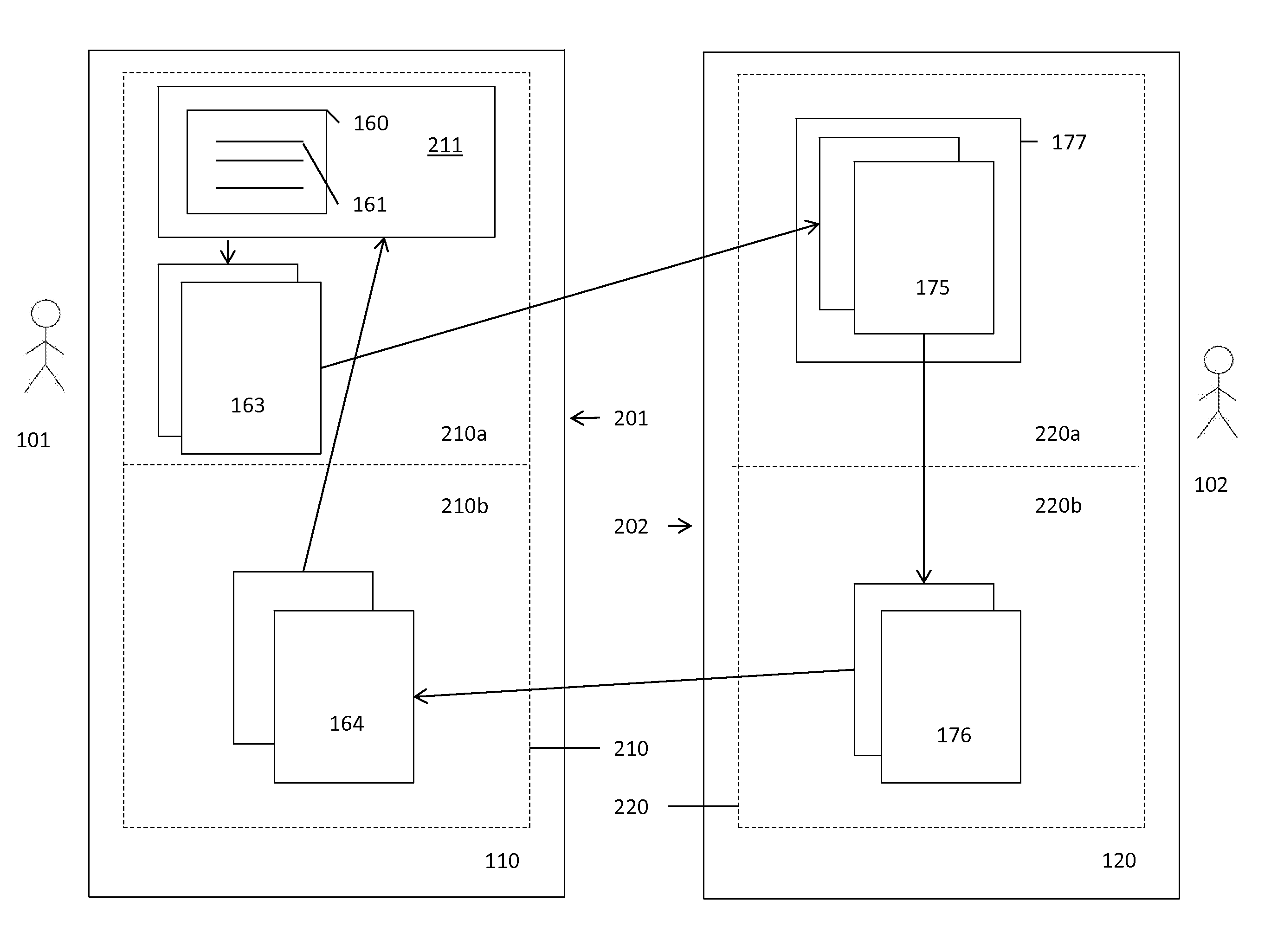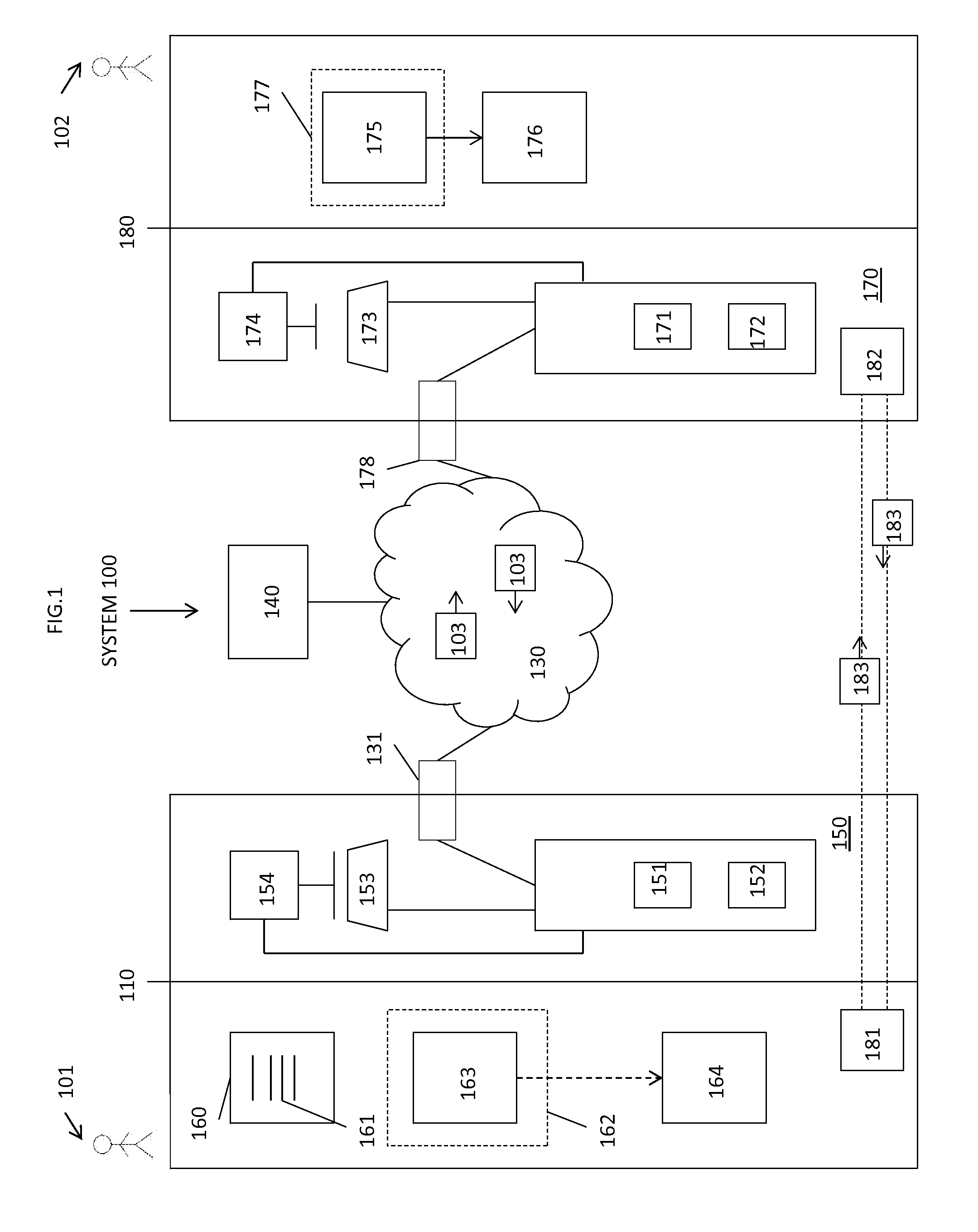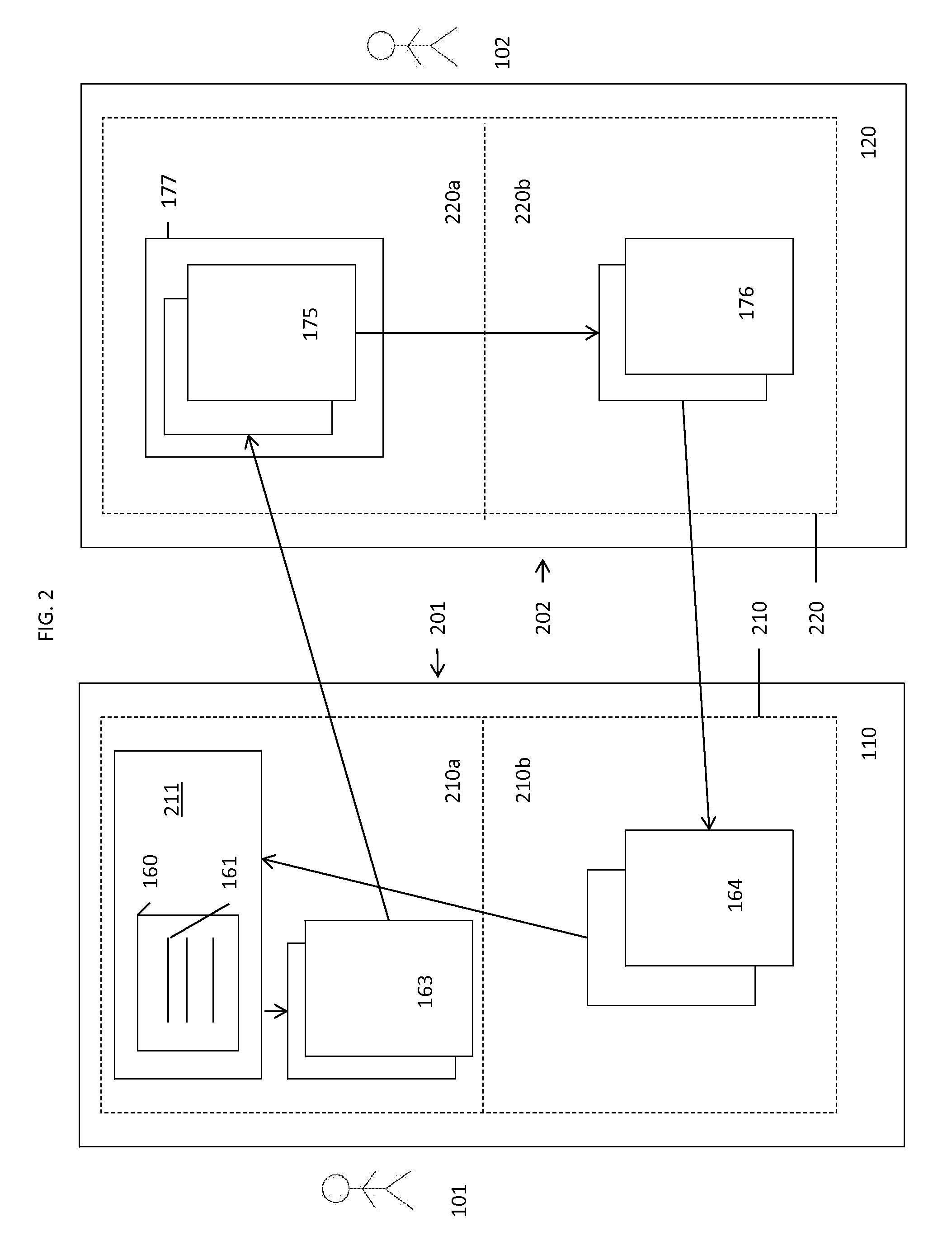Translation in visual context
a visual context and translation technology, applied in the field of translation, can solve the problems of difficulty in modifying or expanding the program later, difficulty in translating the program, and difference in meaning, and achieve the effect of facilitating the translation of the program
- Summary
- Abstract
- Description
- Claims
- Application Information
AI Technical Summary
Benefits of technology
Problems solved by technology
Method used
Image
Examples
Embodiment Construction
[0027]Translation System
[0028]FIG. 1 shows a first conceptual drawing of a system.
[0029]Programmer Workstation.
[0030]A system 100 includes elements shown in the figure, including at least a programmer workstation 110 disposed to be used by a programmer 101 or other user, a translator workstation 120 disposed to be used by a translator 102 or other user, and one or more communication links 130 disposed to carry messages 103 to and fro between the programmer workstation 110 and the translator workstation 120. The system 100 can also include other elements, whether or not shown in the figure, otherwise mentioned herein, or otherwise known in the art. For example, the system 100 can include a monitoring workstation 140 disposed to monitor operation of the system 100, and (optionally) to accept commands from, and provide responses to, one or more network operators or remote devices.
[0031]The programmer workstation 110 can be disposed for operation by one or more programmers 101 or other ...
PUM
 Login to View More
Login to View More Abstract
Description
Claims
Application Information
 Login to View More
Login to View More - R&D
- Intellectual Property
- Life Sciences
- Materials
- Tech Scout
- Unparalleled Data Quality
- Higher Quality Content
- 60% Fewer Hallucinations
Browse by: Latest US Patents, China's latest patents, Technical Efficacy Thesaurus, Application Domain, Technology Topic, Popular Technical Reports.
© 2025 PatSnap. All rights reserved.Legal|Privacy policy|Modern Slavery Act Transparency Statement|Sitemap|About US| Contact US: help@patsnap.com



